I only attempted a few crosses in spring 2023 and unfortunately only one of those was successful. However, the cross that did work was the one I am most anticipating (yay!) and the seed yield was pretty good!
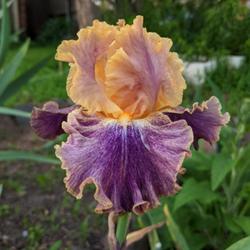
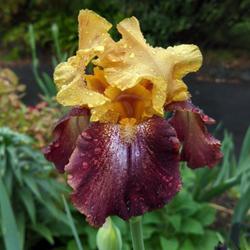
I tried a number of crosses in spring, but only ended up with 3 pods. Here are the results:
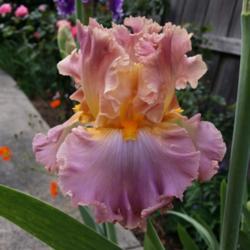

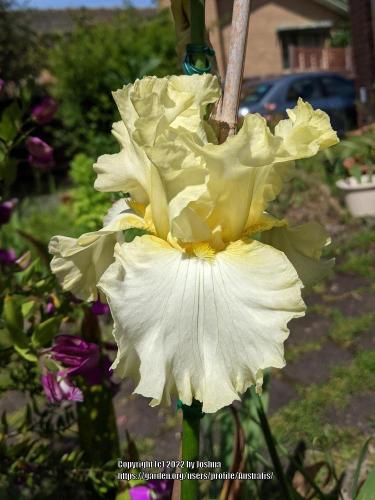 X
X My second Iris cross also used Tall Bearded Iris (Iris 'Saffron Drift') (SD) as the pod parent (as mentioned in my previous post, it doesn't produce pollen for me) after seeing how vigorous the first lot of seedlings from it were.
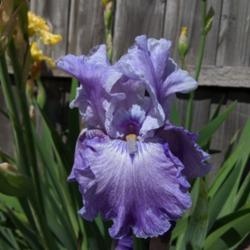
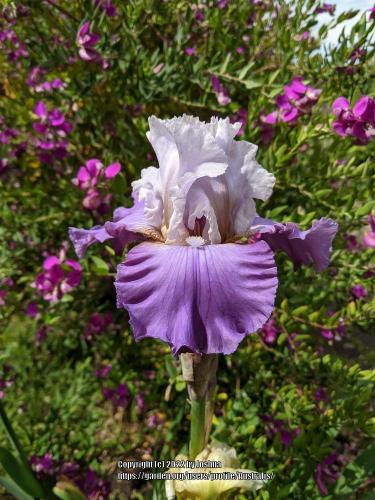

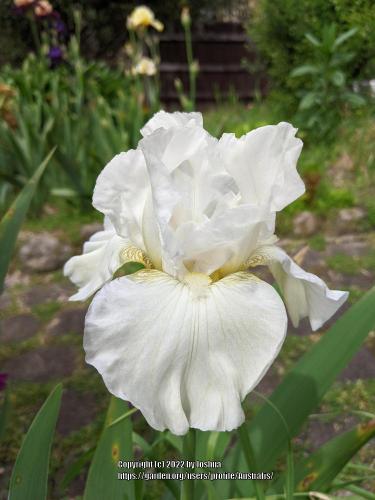
Of the three genera I have tried hybridising (Iris, Lilium and Cymbidium), Irises are by far the easiest! All you need is a pair of tweezers to take the anther from one plant and gently rub the pollen off the anther and onto the stigmatic lip of the intended pod parent. Usually you'll know within a week or so if the cross was successful and a pod has started to develop.
Depending on how keen one is to get the maximum germination from a cross there are various ways to treat the seeds, but (in my climate at least), I can get around 20-30% germination by just directly sowing the seeds as soon as the pod opens. Often the first few will come up and develop before winter, after which a few more will sporadically germinate through spring.
It is the above approach that I used on my first Iris cross of 'Saffron Drift' X 'Hell's Fire'. Tall Bearded Iris (Iris 'Saffron Drift') (SD) has never produced pollen for me, but grows well and has a decent bloom count. It also has relatively strong bloom stalks (although not enough to withstand the wild weather we sometimes get, resulting in the whole fan bending over). It was these traits that I wanted to introduce to Tall Bearded Iris (Iris 'Hell's Fire') (HF) since it didn't grow as well as SD in my conditions and would often need staking.
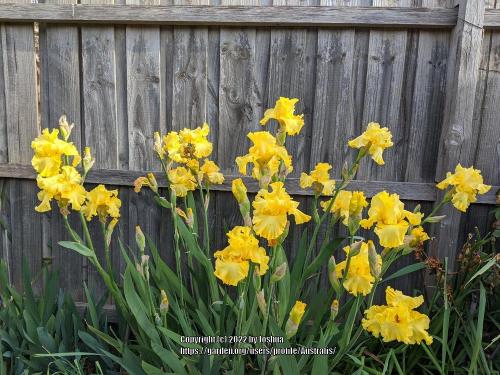
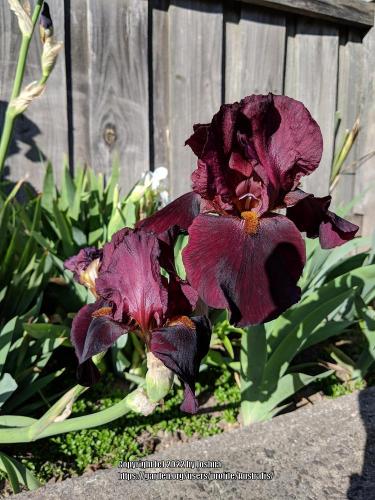
My lack of understanding of Iris colour inheritance really bit me on this cross. I naively figured that since SD had a bicolour parent in the form of Tall Bearded Iris (Iris 'Treasure Trader'), I could expect a mix of 50% yellows, 50% bicolours. How wrong I was!
One of the key bits of information I was missing was that tetraploid (4n) Tall Bearded Iris breed as allotetraploids and thus all 36 combinations of the chromosomes from each parent are possible (unlike SDB Irises, which breed as amphidiploids and hence the chromosomes are always grouped in pairs with one from the TB side and the other from the pumilia side; these are limited to 16 possible combinations). So that would mean only a 1 in 6 chance of a bicolour rather than 1 in 2.
Having flowered 7 seedlings thus far - all of which were basically variations on yellow, with only two showing any significant anthocyanin on the falls - I realised that there was more going on. These two seedlings did not have red falls as expected, but were a dirty yellow-brown. After more reading on colour inheritance (much of it from http://winterberryirises.com/h...), I have come to the conclusion that SD must probably carries two copies of the dominant Anthocyanin Inhibitor gene (often labelled as IA) as well at least two copies of the dominant IAs gene (anthocyanin inhibitor in the standards). HF, being a slight bitone, probably has one copy of the IAs gene.
Besides colour, the seedlings have generally been vigorous and produced new fans before the first one flowered. Unfortunately it seems that the lack of pollen exhibited by SD is a trait that dominates in its offspring, as none of the seedlings from the two crosses I have made with it have had pollen (even one that looked like it might initially did not). The other trait that SD consistently passes on to its progeny (and that I have since learnt is dominant) is haft/shouldering markings. All the seedlings have distinct veining around the hafts.
Seedling #1 is incredibly vigorous and on its second flowering, despite transplanting, produced 9 bloom stalks! It is also the earliest to flower and often beats most other TBs I have. The bloom stalks are too weak, though, so I am currently keeping with the intent to try crossing it with some SDBs (hopefully I will get a variety of vigorous intermediates as a result).
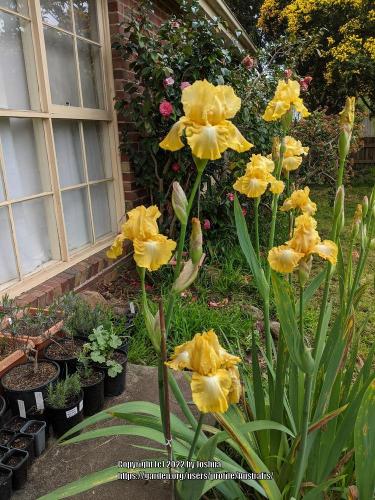
Seedling #2 looks very similar to #1 in photos, but is a cleaner yellow.

Seedling #3 had such a poor bud count that after its second flowering, I culled it. It had more anthocyanin on the falls than any other.

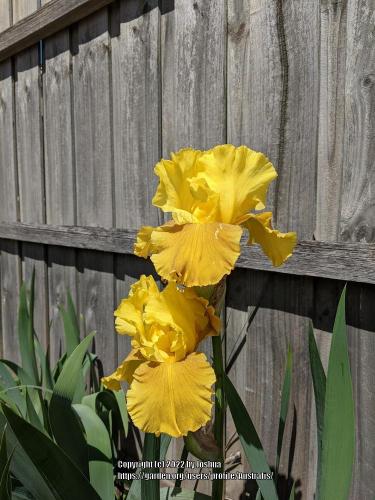
Seedling #4 was the only other seedling with any significant anthocyanin on the falls and more of a sandy colour than a bright or pastel yellow. Often the falls would relax on the first day, but after that would flare outwards - it was the only seedling to do that. One of the latest flowering seedlings in the group. Haven't quite worked out what to do with it, but I feel like this should have potential with the right partner.

Seedling #5 was similar enough to #1 and #2 that I decided not to keep it.
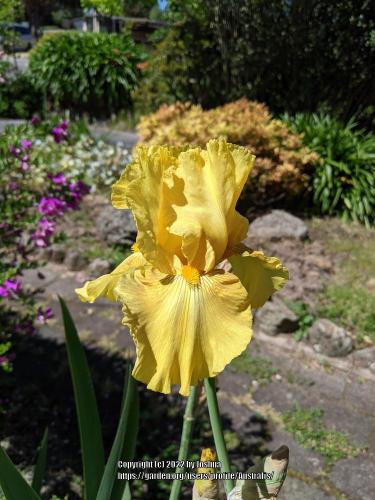

Seedling #6 is from the second batch of seedlings I raised from this cross and so only flowered for the first time this year. Unfortunately the top of the bloom stalk broke off in wild weather, but it had developed enough that it appears to have a good number of sockets (4) and the surviving bloom socket produced 3 buds. Additionally the blooms were long-lasting (the first lasted almost 5 days, although I suspect that was partially due to the weather) and appear to have just a touch of anthocyanin in the falls, given them a slight orange-brown cast. I will definitely be watching this one next year to see what it does.
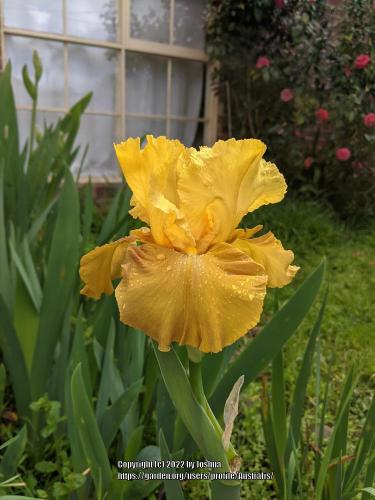
Seedling #7 has the faintest Debby Rairdon pattern to it, harking back to its grandparent, Tall Bearded Iris (Iris 'That's All Folks').
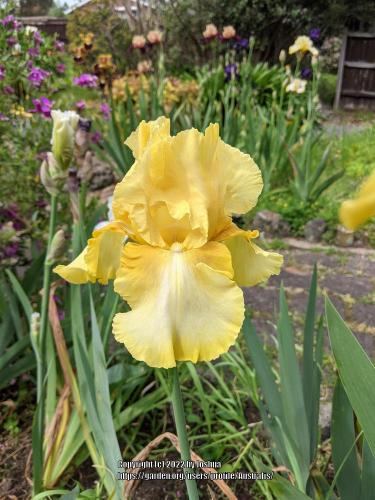
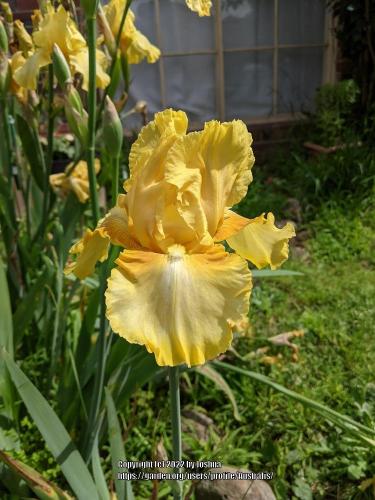

There is still one seedling left to bloom from this cross, which should flower in 2023 for the first time.
I have been thinking about creating a blog on this site for some time, but never quite had a driving reason to do so. In the last year, however, my wife and I purchased a property with a sizeable garden and now have the prospect of growing and flowering a larger number of my own seedlings.
The main genera that I grow are Liliums, Irises and Cymbidiums. I enjoy tinkering with each and have had many learning experiences and failures on the path to getting my own seedlings. This year has seen my second Iris cross start to bloom as well as the second flowering of several of my own Liliums. I have also received Cymbidium seedlings from my own crosses, although they are still some years away from flowering!
My hope is that this will serve as a way to document the results of each cross and give other growers using the same plants a bit of a headstart on what to expect from them. I will probably also share some of my other gardening experiences and occasionally some cat-related interludes!